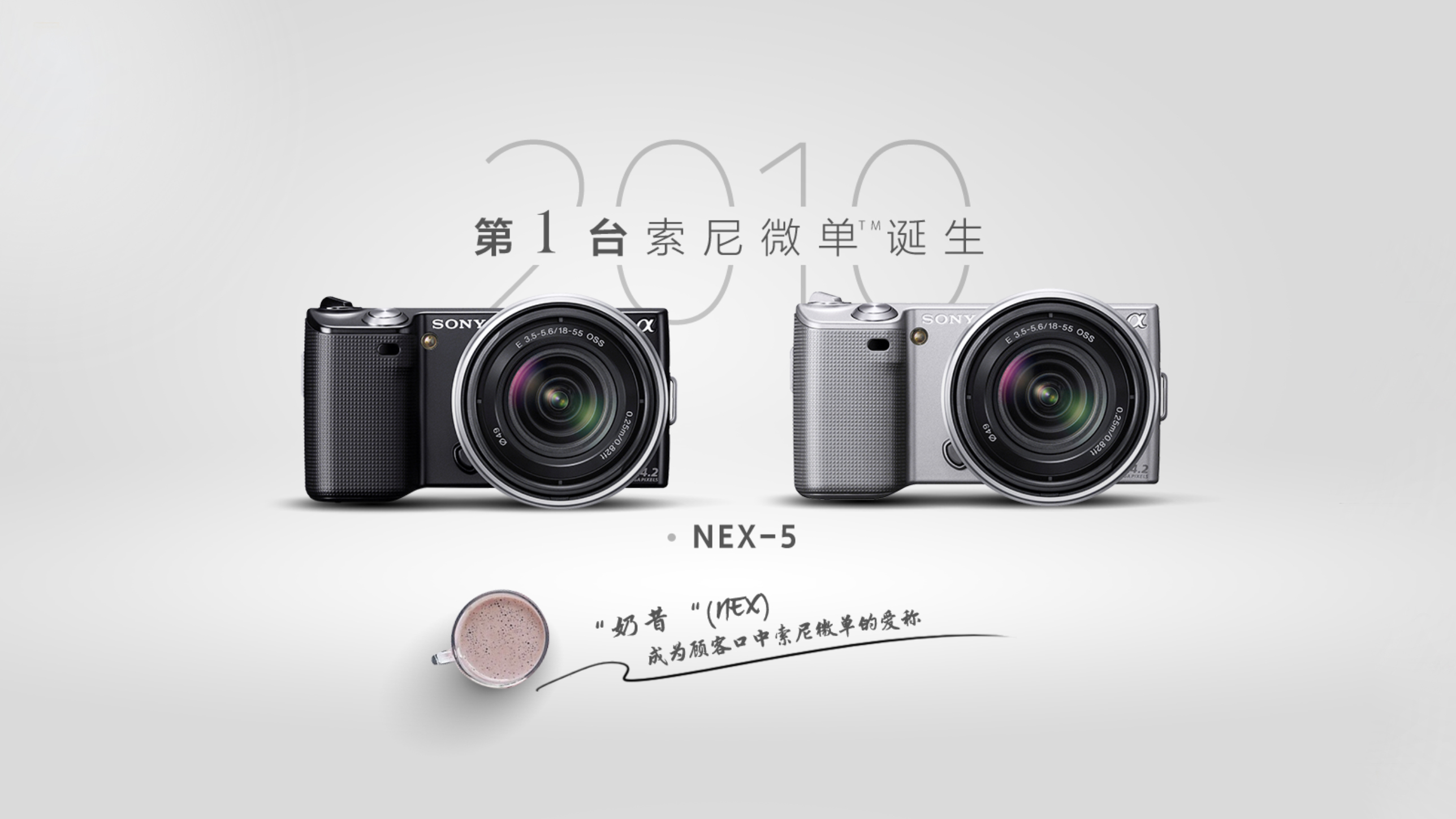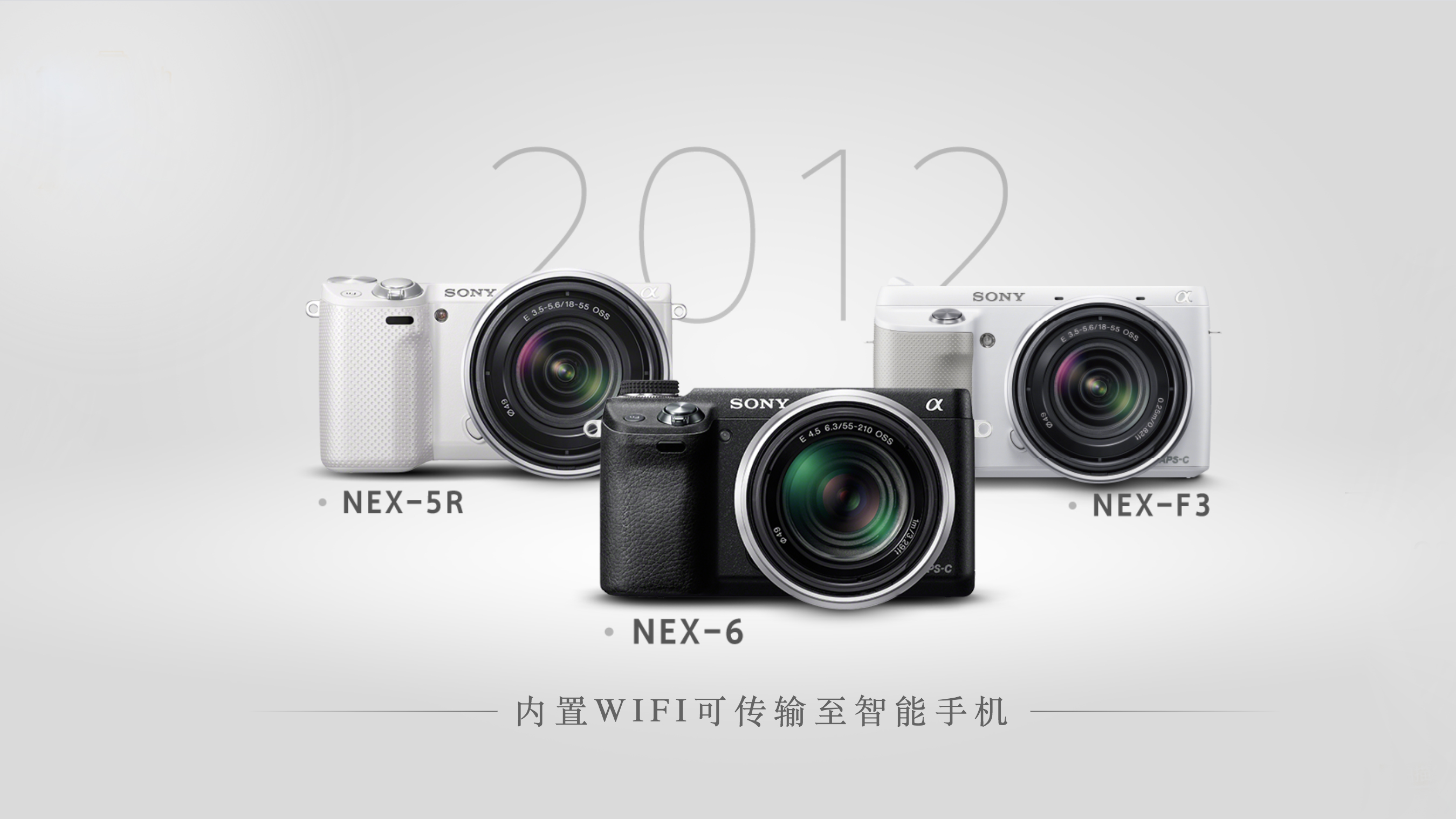Sony E mount turns 10 years old – and its 29 cameras changed the industry
The Sony E mount has just had its 10th birthday – and Sony has launched a celebratory website (in Chinese!)

Happy birthday to the Sony E mount, which has just turned 10 years old! It really does seem like only yesterday that Sony debuted its new mount, with the fledgling NEX product line in 2010.
Indeed, it's easy to forget that NEX stands for "New E-mount eXperience". So while it's easy to forget the NEX line, which was laid to rest in 2014 (with the exception of a handful of Handycam and NXCAM products), we should remember that's where Sony sewed the seeds of success that it currently enjoys.
While the occasion has yet to be officially celebrated elsewhere, Sony China has published a fun microsite dedicated to the E-mount's tenth anniversary. Here's a quick trip down memory lane of the cameras released over the last ten years…
2010
This is where it all kicked off, with the launch of the original E-mount pioneers: the Sony NEX-3 and Sony NEX-5. This dynamic duo featured the same 14.6MP APS-C sensor, with the cheaper NEX-3 featuring a polymer build while the NEX-5 had a sturdier magnesium alloy construction.
Other than the NEX-5 offering superior video – 1080 at up to 60i (yes, 'i' not 'p'!) compared to the 30i of the NEX-3 – the specs were largely identical, with 7fps continuous shooting, ISO200-12800 sensitivity, a tilting 3-inch touchscreen with 920k-dot resolution, and the original Bionz processor. Both supported standard SD cards as well as Sony's own, ill-fated, Memory Stick Pro Duo proprietary format.
2011
The two trailblazers were succeeded the following year by 16MP updates, the Sony NEX-5N and Sony NEX-C3. While both models remained entry level offerings, they were joined by a more advanced body: the Sony NEX-7.
The NEX-7 was the forbear of the Sony A6000, packing a 24.5MP sensor, a 2.4 million-dot electronic viewfinder, 1080p video up to 60fps, electronic first-curtain shutter and increased sensitivity up to ISO16000.
The best camera deals, reviews, product advice, and unmissable photography news, direct to your inbox!
The NEX-7 also holds the dubious honor of seeing the start of Sony cameras being reskinned by Hasselblad and sold with an inflated price tag, in the form of the Hasselblad Lunar.
2012
In 2012 Sony introduced the ability to transfer files to smartphones via WiFi – something that many manufacturers are still trying to master to this day.
What would become an infamous Alpha-bet soup of model numbers can trace its way back here, as we greeted the Sony NEX-F3 (which also introduced the similarly infamous menu system), Sony NEX-5R (an incremental update of the 5N) along with the new Sony NEX-6, which featured an improved 10fps maximum burst rate, in-camera apps and phase detect autofocus.
2013
This was when Sony truly changed the game, introducing the first full-frame mirrorless cameras in the industry: the original Sony A7 and Sony A7R, both of which propelled the Alpha brand to new heights.
The A7 packed an impressive 24.3MP sensor, 25 contrast detect AF points and 117 phase detect points, ISO 50-25600 sensitivity, 921.6k-dot LCD screen, 2.4 million-dot EVF, and line-skipped 1080p MPEG-4 video at 24 and 60 frames.
The A7R, meanwhile, introduced a monster 36.4MP sensor with no low-pass filter. To put that into perspective, it took Canon another seven years to release a full-frame mirrorless camera matching that resolution!
2014
If 2013 was Alpha's coming-out party, 2014 was when Sony really kicked its product line into high gear. It saw the launch of the Sony A5000 and Sony A5100, but crucially it also saw the debut of the Sony A6000, which continues to form the backbone of the manufacturer's monolithic APS-C lineup.
Full-frame bodies evolved in significant ways, with the Sony A7 II and Sony A7S II. Both cameras introduced 1080p in the XAVC format, but the video specialist A7S also brought a 12.2MP sensor with full-width 4K video, 120fps slow-motion (in 720p), with a native ISO102400 maximum sensitivity, expandable to ISO409600.
The 24.3MP A7 II, meanwhile, brought 5-axis image stabilization to the table – and while Sony's tech still lags behind the competition even today, this was a massive thing for full-frame photographers.
2015
With the camera industry now white-hot, Sony quickly pumped out full-frame follow-ups in the form of the Sony A7R II high-resolution body and the video-focused Sony A7S II.
The A7R II featured a 42.4MP image sensor and saw phase detect autofocus and full-width 4K video (albeit via pixel-binning) added to the hi-res line, in addition to in-body image stabilization and silent shutter.
The A7S likewise welcomed IBIS to the feature set of the video line, and while it stuck with contrast-detect autofocus it dramatically increased the number of AF points from 25 to 169. It also increased its 120fps capability to 1080p video.
2016
The previous year saw Sony focus on its full-frame ecosystem, but 2016 was when the APS-C line-up saw a similar shift up in gear. Both the Sony A6300 and Sony A6500 saw their autofocus bolstered with a robust, 425-point phase detect AF system, enabling them to shoot up to 11fps bursts with continuous autofocus and exposure tracking.
The A6300 and A6500 also feature full compatibility with both tiers of Sony's E-mount lenses, that being full frame (FE) and APS-C (E) series of optics.
2017
For Sony, 2017 was highlighted by high image quality and high-speed professional camera systems, in the form of the Sony A7R III and Sony A9 – the manufacturer's first pro sports and news camera body.
The hi-res model seemed like a bit of a light refresh on the surface, but made significant improvements in the AF system (both in terms of performance and adding 400 AF points), adding a larger battery and a second memory card slot.
The original 24MP A9 was an absolutely groundbreaking camera, for Sony in specific and mirrorless imaging in general. The company's flagship camera was capable of astonishing 20fps continuous shooting, with a 693-point phase detection AF system, joystick and (finally!) dual SD cards.
2018
A relatively quiet year for fresh E-mount cameras, it nonetheless saw the introduction of the Sony A7 III – a brilliant all-round body that continues to enjoy huge success even today.
This 24MP camera benefits from the advances made by the A9, namely the 693-point phase detection autofocus system, a joystick and dual SD cards. It also features the then-new continuous Eye AF with tracking, and can shoot 10fps bursts either electronically or via the mechanical shutter.
The A7 III can record 6K-oversampled 4K 24p video, 5K-oversampled 4K 30p, and 1080p up to 120fps. Like the A9 it is weather sealed (though its robustness isn't quite on par with that of other manufacturers), and features an impressive ISO100-51200 sensitivity that's expandable to 204,800.
2019
One of the manufacturer's busiest and most important years yet, 2019 saw the addition of the Sony A6100, Sony A6400 and Sony A6600 (there's that alphabet soup we mentioned!) to its APS-C range.
This was accompanied by the benchmark-setting Sony A7R IV, the highest resolution full-frame camera on the planet, with an astounding 61.4MP image sensor for jaw-dropping image quality. While the Sony A9 II seemed, by contrast, to be much more iterative, it nonetheless brought with it a host of big improvements for pro shooters, from improved ergonomics to significant connectivity additions.
2020
Which brings us bang up to date, with the firm's latest dedicated video body, the Sony A7S III, and its mass-market revamp that squeezes the A7 III specs (and more) into an A6600 body, the Sony A7C.
Though it doesn't match the 6K firepower of the Panasonic S1H or the 8K warhead of the Canon EOS R5, the A7S III boasts 4K 120p video (which isn't as prone to overheating as Canon's camera) along with brand new twin-card, twin-format slots for CFexpress Type A and SD memory formats.
The A7C, meanwhile, takes the super all-round specs of the A7 III and combines it with the form factor of the A6600 – resulting in the smallest full-frame mirrorless camera on the market (excluding the Sigma fp, which lacks an EVF).
It's been a heck of a decade for Sony, which has absolutely transformed the imaging industry – even toppling Nikon to become the second-biggest camera manufacturer in the world. And with the company showing no signs of slowing its quest for dominance, who knows – in another ten years, maybe Sony will have captured that number one spot!
Read more:
The best Sony camera: from full-frame Alphas to compact Cyber-shots
The best Sony lenses: top lenses for Sony mirrorless cameras
The best lenses for Sony A6000 cameras: how to expand your Sony system!
Sony A6000 vs A6100 vs A6300 vs A6400 vs A6500 vs A6600: how do you choose?

James has 25 years experience as a journalist, serving as the head of Digital Camera World for 7 of them. He started working in the photography industry in 2014, product testing and shooting ad campaigns for Olympus, as well as clients like Aston Martin Racing, Elinchrom and L'Oréal. An Olympus / OM System, Canon and Hasselblad shooter, he has a wealth of knowledge on cameras of all makes – and he loves instant cameras, too.











